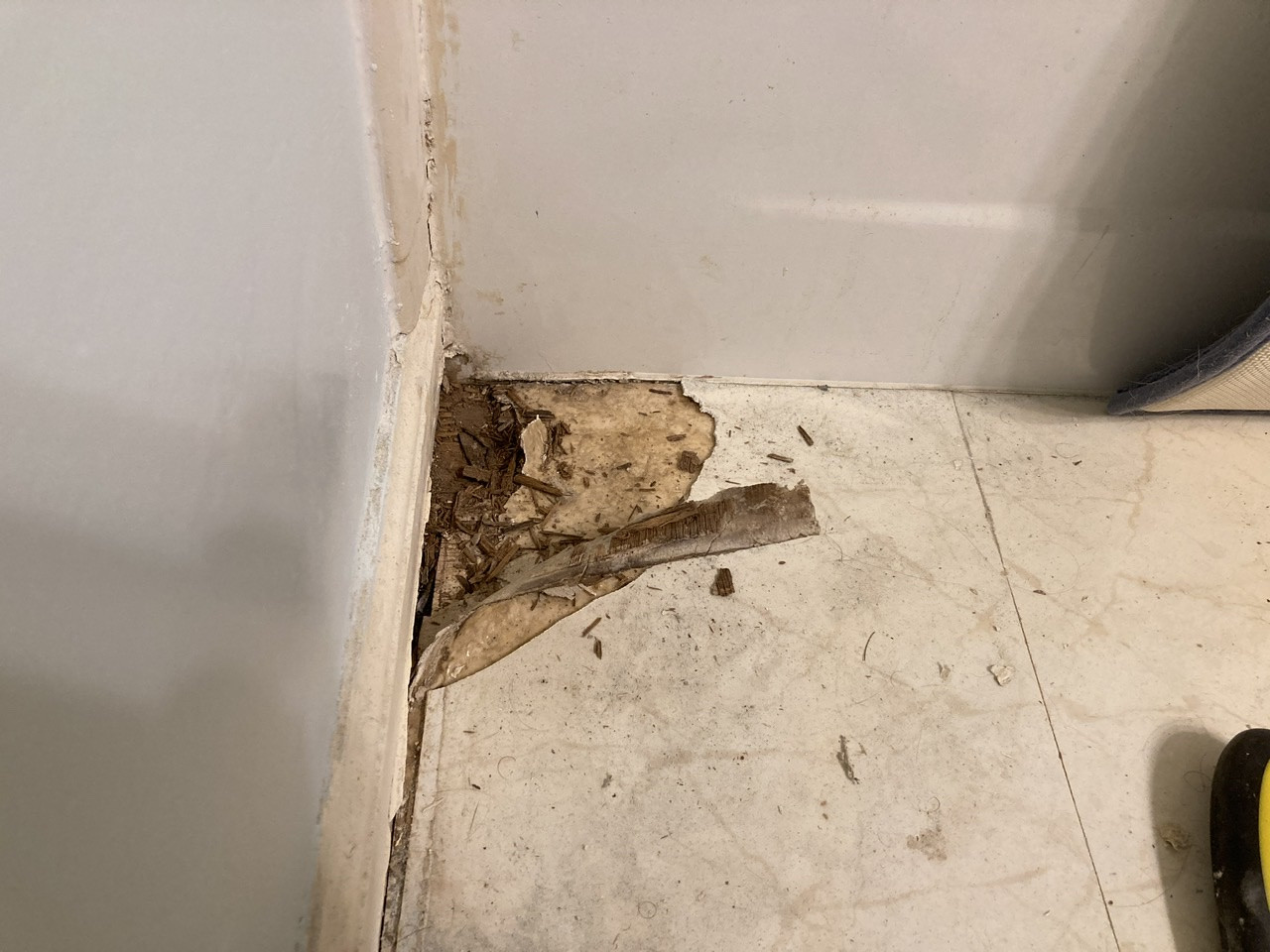I have this small corner of floor next to the tub in my bathroom where water got in at one point (very long ago it seems), so I’ve peeled back the VCT and vinyl floor layers to reveal that the top layer of the wooden subfloor had crumbled due to the water. There is a very solid base under that top layer.
How should I repair this? Could I just patch it with something like this product? I have done large areas of subfloor patching for a flooring installation so I know that for certain products there are very strict requirements for the condition of the subfloor for it to take the patch so I’m wondering if there’s something that works for this type of situation.
(This is a follow up of my previous post here)
Thanks!


